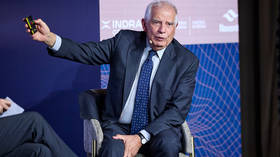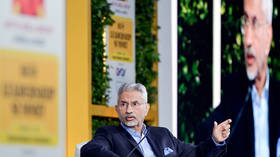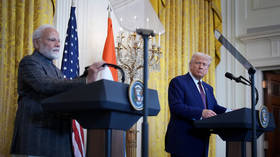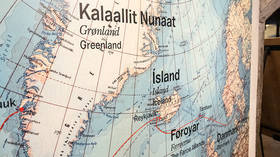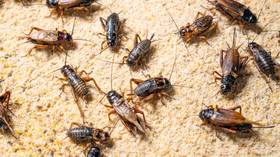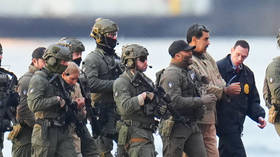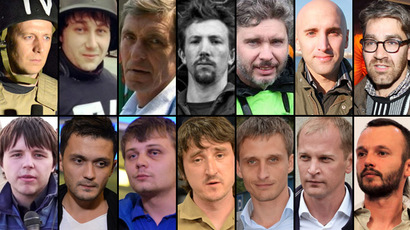Russian journalist arrested, beaten, deported from rebel E. Ukraine

A journalist for a Moscow opposition newspaper was detained, beaten, and accused of committing drug offenses in the self-proclaimed Donetsk People’s Republic (DPR). The UN has recently named Ukraine the most dangerous place for reporters in the world.
Pavel Kanygin, a reporter for Novaya Gazeta, was in Donetsk to cover an anti-war demonstration on Monday. The following day, he was stopped by a group of men, who he said introduced themselves as “DPR security officials.” They searched him, and after finding a Ukrainian journalist’s business card, accused him of working for pro-Kiev media.
“I was taken to the [DPR] security ministry, where one of the officers pointed a gun at me, and said he’d shoot me, if I so much as moved an inch,” Kanygin told Novaya Gazeta after being released on Tuesday night.
Kanygin, who had previously been detained in militia-controlled Slavyansk last year, said he was asked if he was “for us…or for Kiev,” to which he replied “I am for peace.” The interrogator then hit the journalist in the face. Kanygin subsequently posted a picture of himself sporting a black eye on his Facebook account.
READ MORE: In the line of fire: Journalists killed and abducted in Eastern Ukraine
Kanygun was then questioned and asked to undergo a test, which supposedly detected the presence of illegal substances in his bloodstream: “They told me that I was a junkie, and said I received my salary in drugs from Kiev’s security agency and the US State Department,” recounted Kanygin. He added on Facebook that in the past week he has faced mirror accusations of being an “FSB [Russian security service] agent” when reporting in the Kiev-controlled parts of eastern Ukraine.
Novaya Gazeta, known for publishing articles by murdered investigative journalist Anna Politkovskaya, immediately appealed to Moscow authorities to secure its reporter’s release. By late Tuesday afternoon, a Foreign Ministry representative said on Facebook it would “take all necessary steps to protect Russian journalists.” On Tuesday evening, Kanygin was driven to the Russian border with Ukraine, and handed over to border guards, before being debriefed by the FSB.
READ MORE: 'Journo or no, when shelled panic overwhelms’: AFP contributor injured in Ukraine to RT
UN Assistant Secretary-General for Human Rights Ivan Simonovic said during a Monday conference on journalist safety that Ukraine remained the “most dangerous place in the world” for journalists. The OSCE says that there have been more than 300 attacks on media representatives in Ukraine – both intentional and accidental – since the armed conflict broke out in the spring of 2014. This includes attacks committed by the pro-Kiev forces.
On Sunday, Alexander Gayuk, a freelancer working for AFP, became the latest journalist to be hit by a shell while taking photographs in Donetsk, taking a shell fragment in the leg. Shelling has killed more than half a dozen journalists in the breakaway region in the past year. Other incidents, such as repeated abductions of warzone reporters, and the gunning down of Ukrainian opposition commentator Oleg Buzina earlier this year, have been deemed a part of an open campaign to intimidate journalists.


